Results 2,031 to 2,040 of 12089
Thread: Anandtech News
-
06-18-12, 10:30 PM #2031
Anandtech: Nokia Announces PureView 808 Coming to USA for $699
The last time we played with the Nokia PureView 808 was at MWC, where I came away very impressed with the device and what I saw in terms of image quality from the camera. For those unfamiliar with the PureView 808, the smartphone packs a huge 1/1.2" 41 MP CMOS sensor and runs Symbian Belle. While I'm still waiting on our PureView 808 review unit (and look forward to talking about its optical system), Nokia today has answered a lingering question about availability for customers in the US. The PureView 808 will be available through Amazon.com at some point in the future (no exact date was given) for $699 unlocked.
Potential PureView 808 shoppers can sign up to be notified when the Amazon preorder page is live on the PureView 808 page. The PureView 808 includes the proper UMTS bands for AT&T HSPA+, however it lacks AWS for T-Mobile HSPA+ and will instead work on GSM/EDGE for those subscribers.
Source: Nokia Conversations Blog
More...
-
06-19-12, 12:30 AM #2032
Anandtech: Intel Announces Xeon Phi Family of Co-Processors – MIC Goes Retail
As conference season is in full swing, this week’s big technical conference is the 2012 International Supercomputing Conference (ISC) taking place over in Hamburg, Germany. ISC is one of the traditional venues for major supercomputing and high performance computing (HPC) announcements and this year is no exception. Several companies will be showing off their wares, but perhaps the biggest announcement of the week is from Intel. After having worked on the project for over half a decade in some form or another they’re finally ready to take a stab at the parallel computing market by bringing their first Many Integrated Core (MIC) product to market. Knights Corner, the codename for the first such product, will be the launch product for a brand new family of Intel co-processors, which the company is introducing as the Xeon Phi family.
As a bit of background on the subject, as many of our regular readers are aware Intel has been working for a while now on various high performance highly parallel CPU and GPU designs based on their x86 architecture. Initially intended to fill a gap in the High Performance Computing space where users have workloads that are highly parallel (as opposed to highly serial), these designs would be able to quickly tear through highly parallel workloads by using a large collection of small, simple x86 cores that would be far better suited to the task than the large, complex x86 cores that are necessary for a modern CPU.
The first and still most famous of these projects was Larrabee, which initially unveiled in 2008 was Intel’s first attempt at building such an HPC processor in the form of a graphics capable CPU. Larrabee was to be Intel’s answer to practically NVIDIA’s entire desktop GPU lineup, with Larrabee intended to confront GeForce on the graphics side and the then-fledgling Tesla on the HPC side, both served by a single processor similar to how NVIDIA uses the same GPUs in both Tesla and GeForce products. Larrabee of course never came to fruition, and in 2010 Intel canceled it while continuing their research into parallel processing.
Larrabee’s successor was named shortly thereafter under a new architecture called Many Integrated Core (MIC), which in many ways was a direct continuation from where Larrabee left off. MIC kept the concept of multiple simple X86 cores, but threw away any pretense of graphics in favor of focusing solely on HPC computing. Even at more than 2 years out from launch Intel already had a plan for MIC, announcing the codename of the first processor – Knights Corner – which would have 50+ cores and be manufactured on Intel’s 22nm process.
This brings us to the present and Intel’s latest announcement. With Intel’s 22nm process in full production Intel is adhering to their previously announced plans and is getting ready to bring MIC to the market. So with ISC 2012 as the logical backdrop for such a product, Intel is announcing that Knights Corner will be launching into retail as the Xeon Phi family of co-processors.
At this point we don’t have the full technical details of the Xeon Phi family – Intel is still holding their cards close to their chest at this time – but with this announcement we do finally have some additional details on the hardware and how Intel intends to market it. The first generation of Xeon Phi products will be composed of an unknown number of products in the form of PCIe cards. Intel hasn’t nailed down the specific number of cores, keeping it at a nebulous 50+, but we do know that Intel is sticking to the goal of offering 1TFLOP of real world double-precision (FP64) performance; for comparison Tesla M2090 and Radeon HD 7970 have a theoretical FP64 throughput of 665GFLOPs and 947GFLOPs respectively. As for memory, Xeon Phi boards will come with at least 8GB of GDDR5, which marks the first time Intel has ever paired up a CPU with what’s otherwise graphics memory. Meanwhile the fact that it’s 8GB means we’re looking at either a 256-bit or 512-bit memory bus.
Intel isn’t using the Xeon Phi announcement to bring a great deal of attention to the underlying architecture, but all indications are that it’s closely related to what we first saw with Larrabee, with Intel confirming that it is indeed using an enhanced Pentium 1 (P54C) core with the addition of vector and FP64 hardware. Intel has also confirmed that Xeon Phi will offer 512-bit SIMD operations, which means we’re almost certainly looking at a 16-wide vector ALU in each core, the same kind of vector unit that Larrabee was detailed to have.
We also don’t have any deep details about its fabrication – all indications are that Knights Corner is going to be large for an Intel processor – but Intel has reiterated that it’s being built on their 22nm process. Traditionally Intel has reserved their leading edge process for their higher margin mainstream products such as Core and Xeon processors, with Atom, Itanium, and other low-margin/niche products being a node (or more behind). Xeon Phi will be the first niche product to be built on Intel’s 22nm process with Atom following it up in the future.
Meanwhile on the software side of things in an interesting move Intel is going to be equipping Xeon Phi co-processors with their own OS, in effect making them stand-alone computers (despite the co-processor designation) and significantly deviating from what we’ve seen on similar products (i.e. Tesla). Xeon Phis will be independently running an embedded form of Linux, which Intel has said will be of particular benefit for cluster users. Drivers of course will still be necessary for a host device to interface with the co-processor, with the implication being that these drivers will be fairly thin and simple since the co-processor itself is already running a full OS.
All of this of course is designed to further build upon x86. The fundamental purpose of the Xeon Phi family is to bring highly threaded processing to x86, allowing x86 developers to quickly integrate the co-processor into their existing workloads and code as opposed to having to target another ISA and any idiosyncrasies it may bring. With that said it’s interesting to note that while Xeon Phi co-processors can either be used as a proper co-processor alongside a traditional Xeon processor or as a standalone device, Intel’s marketing group is focusing on the latter to differentiate themselves from NVIDIA’s Tesla products. So while it’s possible to use both Xeon and Xeon Phi processors together on a single project it’s not clear just how common that’s going to be. Intel looks to be largely exploiting x86 for the familiarity of the ISA as opposed for the ability for code to run on either kind of Xeon.
Last but not least, Intel hasn’t put any hard date on availability but they have said they expect Xeon Phi co-processors to go into full production later this year, and in the meantime Intel has already produced enough co-processors to build a MIC based supercomputer that’s ranked #150 on the new TOP 500 list. Given the typical gap between volume production and when a product is available for purchase it’s likely that Xeon Phi co-processors won’t be available until the end of the year – if not next year – but regardless the timing is such that Intel will be going up against NVIDIA’s GK110-based Tesla K20, which is similarly expected by the end of the year. Meanwhile given AMD’s HPC ambitions with GCN we’re also not ready to rule them out, so all 3 parties may have major compute products out by the start of 2013.
Wrapping things up, as always we’ll be keeping on top of the Xeon Phi family and should have more details later this year once Intel nails down final specifications and pricing. So until then stay tuned.
More...
-
06-19-12, 01:00 AM #2033
Anandtech: iBuyPower's Valkyrie CZ-17 Rides In
Ordinarily we try to avoid posting announcements of new notebook systems from individual boutique vendors since 99% of the time what they're really announcing is that they're carrying the latest notebook from Clevo or Compal. Today's announcement from iBuyPower consists of that outside 1%, though: their new 17" gaming notebook, the Valkyrie CZ-17, appears to be completely unique to them.
Spec-wise, most of the Valkyrie CZ-17 is par for the course for a 17" notebook. It includes Intel's Ivy Bridge Core i7 processors (no i3 or i5) and quad cores only as befitting a gaming machine. Handling graphics duties is NVIDIA's GeForce GTX 670M with 1.5GB of GDDR5, a rebranded GTX 570M with slightly higher clocks. In their press release iBuyPower advertises the CZ-17 being available with the GTX 675M, but that part doesn't appear to be available as an option yet. Hopefully we'll see it updated to a GTX 680M or AMD Radeon HD 7970M at some point in the future, though, as the chip behind the GTX 670M is getting a little long in the tooth.
Rounding it out, the CZ-17 sports two 2.5" drive bays, an optical bay that can be configured with a blu-ray writer, and four SO-DIMM slots for up to 32GB of DDR3. The screen offers a full 1080p resolution, and the keyboard is backlit. iBuyPower's big claim to fame is inclusion of Killer LAN E2200 gigabit wired ethernet connection, though we'd really be more impressed if they also offered the Killer Wireless-n module.
What actually is impressive is the comparatively low 6.85lb. body weight for a 17" gaming notebook; Alienware's M17x R3/R4 weighs a good two pounds more.
The iBuyPower Valkyrie CZ-17 is available now starting at a reasonable $1,299.
More...
-
06-19-12, 07:30 PM #2034
Anandtech: HP Phoenix h9-1120t System Review: HP's Gaming Desktop Round Two with Tahi
Less than four months ago we had in for review HP's entry to the gaming desktop market, the Phoenix. We found that it was a compelling product that served a market segment that had gone largely ignored by the major vendors, though the Sandy Bridge-E build had a hard time justifying its cost. Worse, by the time our review went up HP had already basically obsoleted our review unit.
Today we go for a second round with the HP Phoenix, and this time we're taking a look at what HP claims should be a much more compelling model than the one we reviewed before. You'll recall Sandy Bridge-E and NVIDIA's last-generation GeForce GTX 580 drove the price up to a staggering $2,880, putting it easily within striking distance of the boutiques you would normally be buying gaming desktops from. Our review unit today exchanges Sandy Bridge-E for Ivy Bridge, and includes the promised update from Fermi to Tahiti. Has HP made a better argument for Phoenix, or is this second run at the crown still not enough?
More...
-
06-19-12, 09:00 PM #2035
Anandtech: Hynix to Acquire Link A Media Devices (LAMD)
Hynix published a press release that hey have acquired Link A Media Devices (commonly referred to as simply LAMD). The cost of the acquisition has not been revealed, nor did Hynix state when the acquisition should be complete. LAMD will be joining Hynix as a NAND focused business unit, but right now there is no confirmation whether the LAMD name will stay.
LAMD was actually founded over eight years ago, but it has not received much publicity until earlier this month when Corsair announced their Neutron SSD series, which is the first consumer SSD to be based on a LAMD controller. LAMD has been more concentrated on the enterprise storage market in the past.
Supposedly, the LM87800 controller used in Corsair's Neutron SSD series is exclusive to Corsair for the near future, although no specific time frame was announced. The acquisition should not have an impact on Corsair's exclusivity since it was disclosed before the acquisition, but I'm sure Corsair is not very happy about this. Corsair is one of the many SSD OEMs that mainly buy everything from other companies and just build the SSD. That limits differentiation and the LAMD exclusivity would have been a great benefit for them, but now it looks like it will be a very short run.
Hynix is actually not a new player in the SSD market but their SSDs have never gained much popularity. (To be honest, I didn't know they made SSDs until I started googling.) In fact, Hynix' SandForce based SH910 lineup was revealed only a couple of days ago.
As a whole, the deal makes perfect sense. Hynix is pretty much the only NAND manufacturer that has not had a breakthrough in the SSD market. Intel, Samsung, Micron/Crucial, Toshiba, and SanDisk are all fairly big names in the market. However, there is one thing common with all of them: they all make their own firmware. Intel gave up on in-house controllers (for the time being), but all their SSDs still ship with Intel's own custom firmware. Micron/Crucial is using Marvell's controllers with custom firmware in their consumer products, but they also have an in-house enterprise controller. Toshiba has made their own controllers in the past but their SATA 6Gb/s SSDs are a mystery for now; they might be a SandForce rebrand but I would at least expect custom firmware. SanDisk acquired a controller firm called Pliant in 2011, although they use third party controllers as well. And finally, Samsung is even more in control of their SSDs as they make everything from DRAM to firmware on their own.
It's quite obvious that Hynix needed something that would make them unique. SandForce is now part of LSI, which is way too big for Hynix to acquire (considering they haven't made any profit in the last two years). Marvell falls in the same category. While the price of the acquisition was not revealed, LAMD was likely nowhere near as expensive as LSI or Marvell would have been, which is why it was a logical choice for Hynix.
Another option would have been hiring a firmware team and developing a custom firmware for a third party controller like Intel and Micron are doing. The downside is that they would not have the freedom to do whatever they want - they might be limited by the controller's design for example. Having your own controller is liberating because you have the ability to design it from a scratch. You can concentrate on the areas you find important and not be bottlenecked by a third party controller.
All in all, this is a very interesting and welcome acquisition. Now Hynix has all they need: NAND, DRAM, controller and firmware. As we have seen with Intel, Samsung, and other SSD giants, that is an extremely powerful combination. Judging by the performance figures of Corsair's Neutron series, LAMD's LM87800 controller is fast. Combine a high performance controller with your own NAND and you've got a competitive SSD. Reliability is of course a question mark at this point but usually when you build the SSD from beginning to end, reliablity is higher because you have total control over every single part. It's not a coincidence that Intel, Samsung, Toshiba and Micron/Crucial SSDs are regarded as the most reliable SSDs.
We are eagerly waiting for our Corsair Neutron review sample to see how the LAMD controller performs. Once we have tested it, we might know more about the motives behind Hynix's decision to acquire LAMD. Either way, it looks like the SSD market just got one more powerful competitor.
More...
-
06-19-12, 11:30 PM #2036
Anandtech: Samsung Galaxy S III Review - AT&T and T-Mobile USA Variants
For the past couple of days I've been playing with, benchmarking, and battery life testing two USA-bound variants of the SGS3 literally nonstop, a white AT&T model with LTE, and a pearl blue model headed to T-Mobile. The USA SGS3 launch is shaping up to be the largest in Samsung's history, and for the first time all of the carriers will get largely the same exact hardware. Samsung has certainly come a long way since the first Galaxy S.
Read on for our full review.
More...
-
06-20-12, 07:30 AM #2037
Anandtech: Acer’s Timeline Ultra M5: Ivy Bridge Ultrabooks with Kepler GPUs
In an interesting twist, back in March when NVIDIA was unveiling their new Kepler GPUs, Acer started shipping their Timeline Ultra M3 Ultrabook before the Kepler NDA expired. While everyone else was apparently busy trying to get their Ivy Bridge laptops and Ultrabooks ready, Acer decided to beat them to the punch by releasing a Sandy Bridge Ultrabook with NVIDIA’s latest and greatest mobile GPU, the GT 640M. The biggest problem for those interested in the TimelineU M3 was that it was primarily for Asian markets and never showed up at the major US retailers.
Three months later, Acer is back with the expected Ivy Bridge upgrades, and this time we should see widespread availability in North America (and presumably in the rest of the world as well, though model numbers are likely to vary somewhat). Here’s the rundown of the three initial Timeline Ultra M5 models slated for the US.
Canada will also be getting three (different) models, which we’ve listed below:Acer Timeline Ultra M5 – USA Models Model M5-481T-6670 M5-481TG-6814 M5-581TG-6666 CPU Core i3-2377M Core i5-3317U Core i5-3317U Graphics Intel HD 3000 NVIDIA GeForce GT 640M LE
(384 cores, 500MHz, 1GB GDDR5)
Intel HD 4000NVIDIA GeForce GT 640M LE
(384 cores, 500MHz, 1GB GDDR5)
Intel HD 4000Display 14” 1366x768 14” 1366x768 15.6” 1366x768 Chipset HM77 HM77 HM77 Memory 6GB DDR3-1066 (?) 4GB DDR3-1066 (?) 6GB DDR3-1066 (?) Storage 500GB HDD
20GB SSD cache
DVDRW500GB HDD
20GB SSD cache
DVDRW500GB HDD
20GB SSD cache
DVDRWBattery 3-cell, up to 8 hours
Rated for 1000 cycles3-cell, up to 8 hours
Rated for 1000 cycles3-cell, up to 8 hours
Rated for 1000 cyclesI/O Ports 2x USB 3.0
1x HDMI
1 combo headphone/mic
AC power2x USB 3.0
1x HDMI
1 combo headphone/mic
AC power2x USB 3.0
1x USB 2.0
1x HDMI
Ethernet
1 combo headphone/mic
AC powerNetworking 802.11bgn WiFi
Bluetooth 4.0+HS802.11bgn WiFi
Bluetooth 4.0+HS802.11bgn WiFi
Bluetooth 4.0+HS
Gigabit EthernetExtras 1.3MP HD Webcam
Backlit keyboard
Dolby Audio
Acer Clear-fi
SD/MMC card reader1.3MP HD Webcam
Backlit keyboard
Dolby Audio
Acer Clear-fi
SD/MMC card reader1.3MP HD Webcam
Backlit keyboard with 10-key
Dolby Audio
Acer Clear-fi
SD/MMC card readerOperating System Win7 Home Premium 64-bit
Upgrade to Win8 for $15Win7 Home Premium 64-bit
Upgrade to Win8 for $15Win7 Home Premium 64-bit
Upgrade to Win8 for $15Dimensions 13.39” x 9.65” x 0.81” (WxDxH)
(340mm x 245mm x 20.57mm)13.39” x 9.65” x 0.81” (WxDxH)
(340mm x 245mm x 20.57mm)14.8" x 0.78" x 9.8" (WxDxH)
375mm x 250mm x 20mmWeight 4.3 lbs (1.95kg) 4.3 lbs (1.95kg) 5.07 lbs (2.30kg) Warranty 1-year 1-year 1-year MSRP $680 $780 $830
I have to admit that Acer’s decisions on what to ship in the various regions of the world has always baffled me. Canada gets a couple options with pure solid state storage, but the three US models are hybrid solutions. The 15.6” Canadian 581TG-9825 model also comes with a GeForce GT 640M instead of the lesser GT 640M LE. Finally, where the US gets a cheap model with an older Sandy Bridge i3-2377M processor, all of the Canada models are running Ivy Bridge. Of course, pricing for the Canada models is also higher, and in the case of the SSD-only laptops it’s a substantial bump. All of the above laptops are scheduled to start shipping in late June.Acer Timeline Ultra M5 – Canada Models Model M5-481T-6820 M5-481TG-6888 M5-581TG-9825 CPU Core i5-3317U Core i5-3317U Core i5-3517U Graphics Intel HD 4000 NVIDIA GeForce GT 640M LE
(384 cores, 500MHz, 1GB GDDR5)
Intel HD 4000NVIDIA GeForce GT 640M
(384 cores, 625MHz, 1GB GDDR5)
Intel HD 4000Display 14” 1366x768 14” 1366x768 15.6” 1366x768 Chipset HM77 HM77 HM77 Memory 6GB DDR3-1066 (?) 6GB DDR3-1066 (?) 6GB DDR3-1066 (?) Storage 500GB HDD
20GB SSD cache
DVDRW128GB SSD
DVDRW256GB SSD
DVDRWBattery 3-cell, up to 8 hours
Rated for 1000 cycles3-cell, up to 8 hours
Rated for 1000 cycles3-cell, up to 8 hours
Rated for 1000 cyclesI/O Ports 2x USB 3.0
1x HDMI
1 combo headphone/mic
AC power2x USB 3.0
1x HDMI
1 combo headphone/mic
AC power2x USB 3.0
1x USB 2.0
1x HDMI
Ethernet
1 combo headphone/mic
AC powerNetworking 802.11bgn WiFi
Bluetooth 4.0+HS802.11bgn WiFi
Bluetooth 4.0+HS802.11bgn WiFi
Bluetooth 4.0+HS
Gigabit EthernetExtras 1.3MP HD Webcam
Backlit keyboard
Dolby Audio
Acer Clear-fi
SD/MMC card reader1.3MP HD Webcam
Backlit keyboard
Dolby Audio
Acer Clear-fi
SD/MMC card reader1.3MP HD Webcam
Backlit keyboard with 10-key
Dolby Audio
Acer Clear-fi
SD/MMC card readerOperating System Win7 Home Premium 64-bit
Upgrade to Win8 for $15Win7 Home Premium 64-bit
Upgrade to Win8 for $15Win7 Home Premium 64-bit
Upgrade to Win8 for $15Dimensions 13.39” x 9.65” x 0.81” (WxDxH)
(340mm x 245mm x 20.57mm)13.39” x 9.65” x 0.81” (WxDxH)
(340mm x 245mm x 20.57mm)14.8" x 0.78" x 9.8" (WxDxH)
375mm x 250mm x 20mmWeight 4.3 lbs (1.95kg) 4.3 lbs (1.95kg) 5.07 lbs (2.30kg) Warranty 1-year 1-year 1-year MSRP $800 CAN $1000 CAN $1300 CAN
Looking at the core features, most of the changes relative to the M3 we looked at earlier this year appear to come from the CPU and chipset upgrade. USB 3.0 ports are now present, but otherwise everything is pretty tame. It’s not clear if the memory is really only DDR3-1066 or if the spec sheets Acer sent out are incorrect, but it wouldn’t be the first time an OEM has skimped on memory speeds to save a few dollars (or pennies). The LCDs are also bog standard 1366x768 panels, which we love as much as most of our readers (which is to say, not at all, particularly on 15.6” displays). For the hybrid storage, it’s also worth noting that if Acer is doing the same thing as in previous Ultrabooks, the 20GB SSDs are used purely to accelerate the hibernate/resume feature and they’re not actually a full SSD cache with Intel’s Smart Response Technology.
While there are lots of things we can complain about with the overall design and hardware choices (and we did just that with our Acer Timeline Ultra M3 review), ultimately Acer’s US models are designed to hit some of the lowest price points ever for Ultrabooks. The fact that you can now get an i5 Ivy Bridge Ultrabook with discrete graphics for only $830 is pretty impressive, considering last generation Ultrabooks that sold for $850 typically had Core i3 processors and no discrete graphics (which is what Acer is now selling for $680). If you’ve liked the idea of an Ultrabook but still wanted something that could handle moderate gaming, the new additions ought to be right up your alley.
Gallery: Acer’s Timeline Ultra M5: Ivy Bridge Ultrabooks with Kepler GPUs





More...
-
06-20-12, 10:30 AM #2038
Anandtech: Microsoft's Windows Phone Summit in San Francisco - We're There
We're inside the venue at Microsoft's Windows Phone developer summit in San Francisco. From the look of the posters we're in for some new features, including some facial recognition goodness. Vivek did an awesome job covering the Windows Surface announcement in LA just two days ago, now we are just a short wait away from seeing what Microsoft has in store for the phone side of things.
We'll be updating as the event unfolds this morning.
More...
-
06-20-12, 11:30 AM #2039
Anandtech: Zotac GeForce GT 640 DDR3 Review: Glacial Gaming & Heavenly HTPC
Two weeks ago NVIDIA formally launched the retail GeForce GT 640, catching up to their OEM and laptop offerings with their first GK107 based video card for the retail desktop market. GT 640 is designed to be NVIDIA’s entry-level Kepler video card, joining several Fermi rebadges as the members of the GT 6xx series. With the enthusiasm behind Intel’s Ivy Bridge in the laptop market and the boost in sales it has provided for NVIDIA’s mobile GPUs, NVIDIA is hoping to accomplish the same thing in the desktop market with GT 640.
Today we’ll finally be taking a look at the GT 640 in action. As is common with entry-level video cards there is no reference design intended for retail sale and NVIDIA isn’t sampling any such card. However, NVIDIA’s partners are stepping up to sample cards to the press. Our sample comes from Zotac, who sent over their single slot based Zotac GeForce GT 640.
More...
-
06-20-12, 12:00 PM #2040
Anandtech: Windows Phone 8 Adds support for Multi Core SoCs, Higher Resolutions, micr
We're at the Windows Phone 8 summit, where Microsoft just made support for a bunch of new WP8 features official. The rumors were true, and the platform is moving to the same kernel which powers Windows 8, and away from Windows CE which powered Windows Phone 7.
Along those lines, the platform gets multi-core SoC support. Joe Belfiore noted that Microsoft has spent a lot of development time making sure that their scheduler works nicely with multi core ARM SoCs, and obviously since this is the same kernel that scales nicely on the desktop to more cores, that shouldn't be a problem. In addition, the platform now includes support fortwo new resolutions - WXGA (1280x768) and 720p in addition to the traditional WVGA (800x480). Removable storage is now supported as well, which means that the JBOD that previously made this only really upgradeable at initial setup has probably gone away.Finally, NFC support is now included, along with a Microsoft eWallet solution.
More...
Thread Information
Users Browsing this Thread
There are currently 21 users browsing this thread. (0 members and 21 guests)




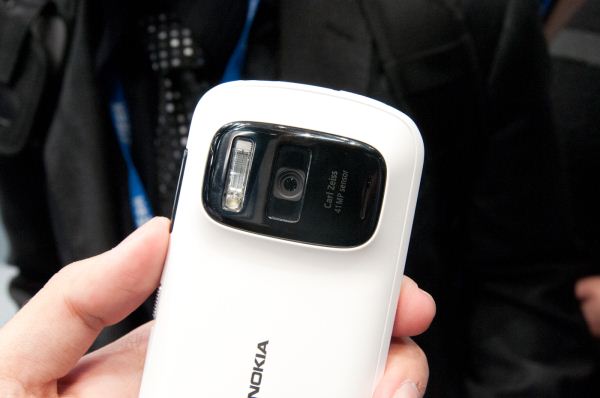

 Quote
Quote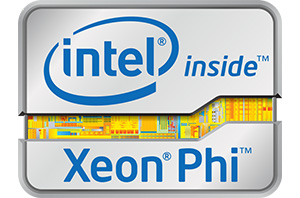
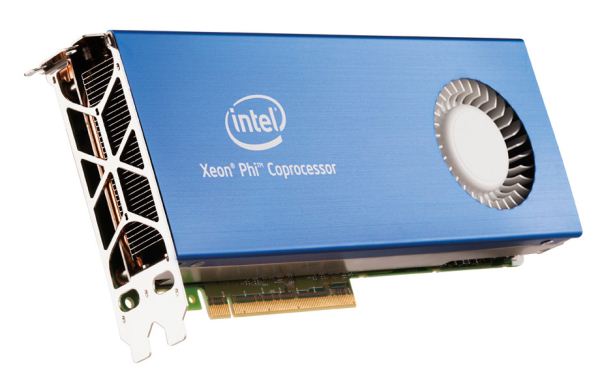

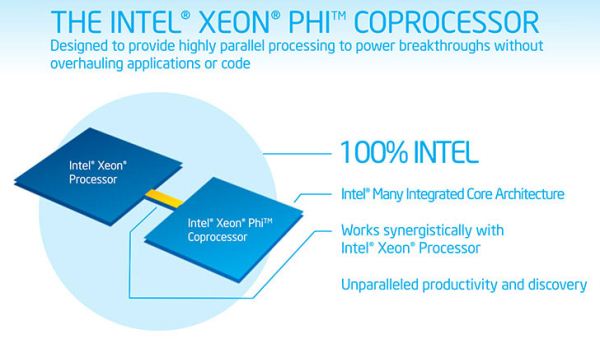



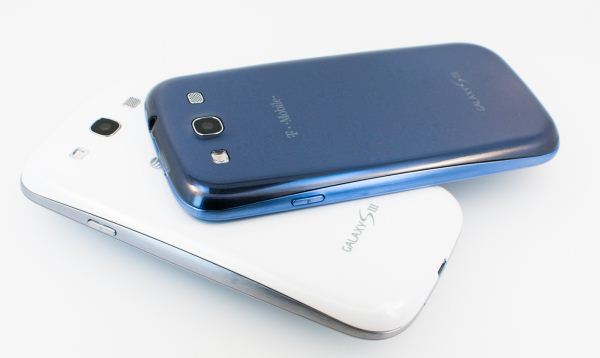
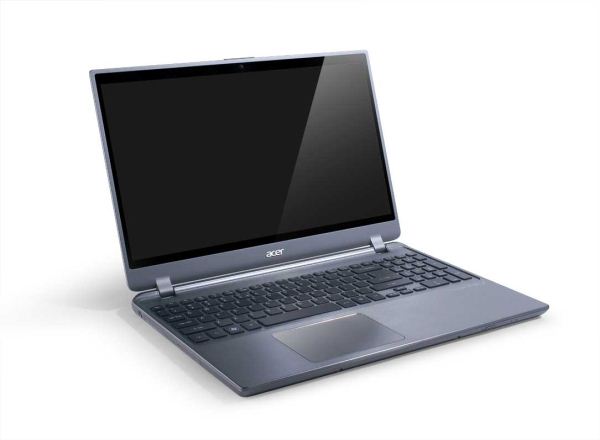




















Bookmarks